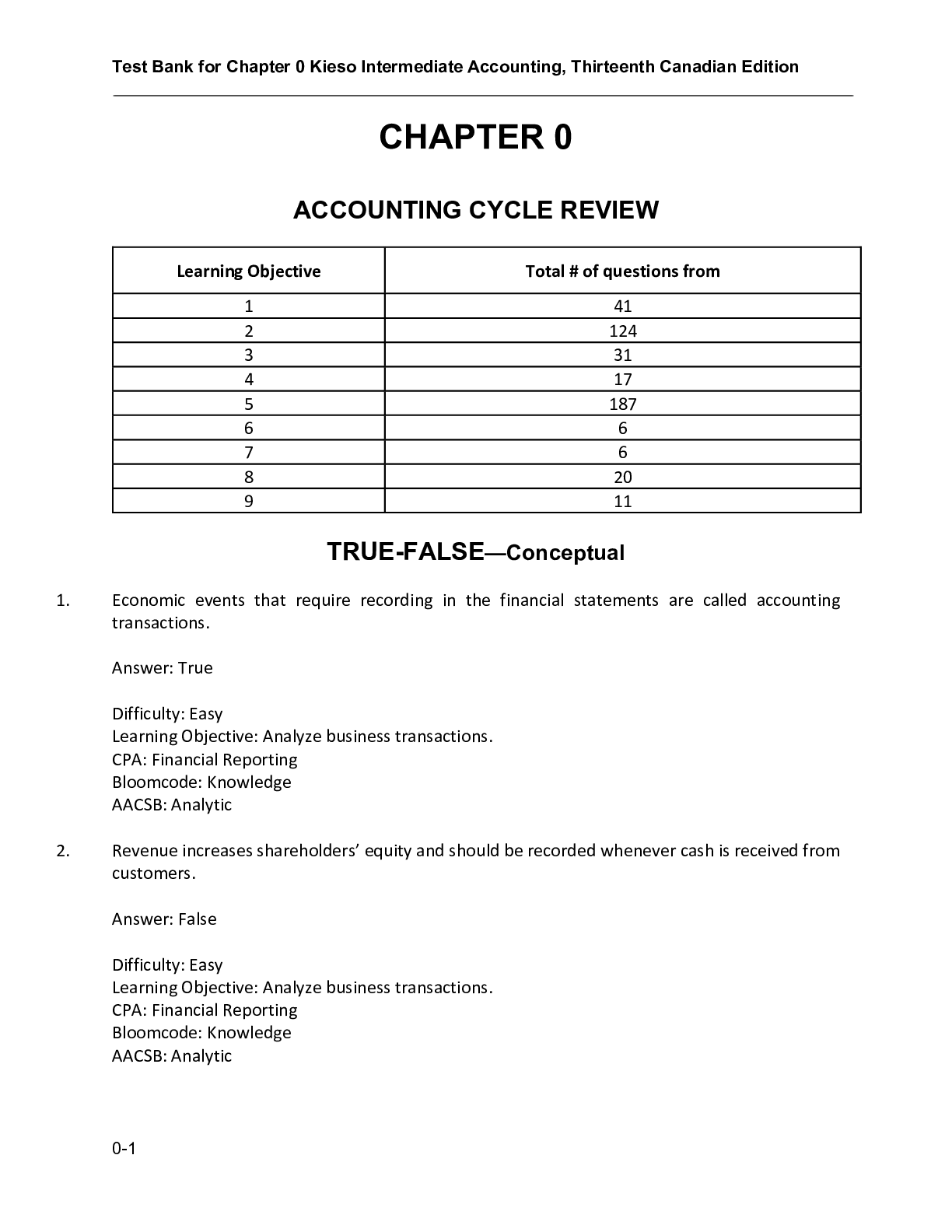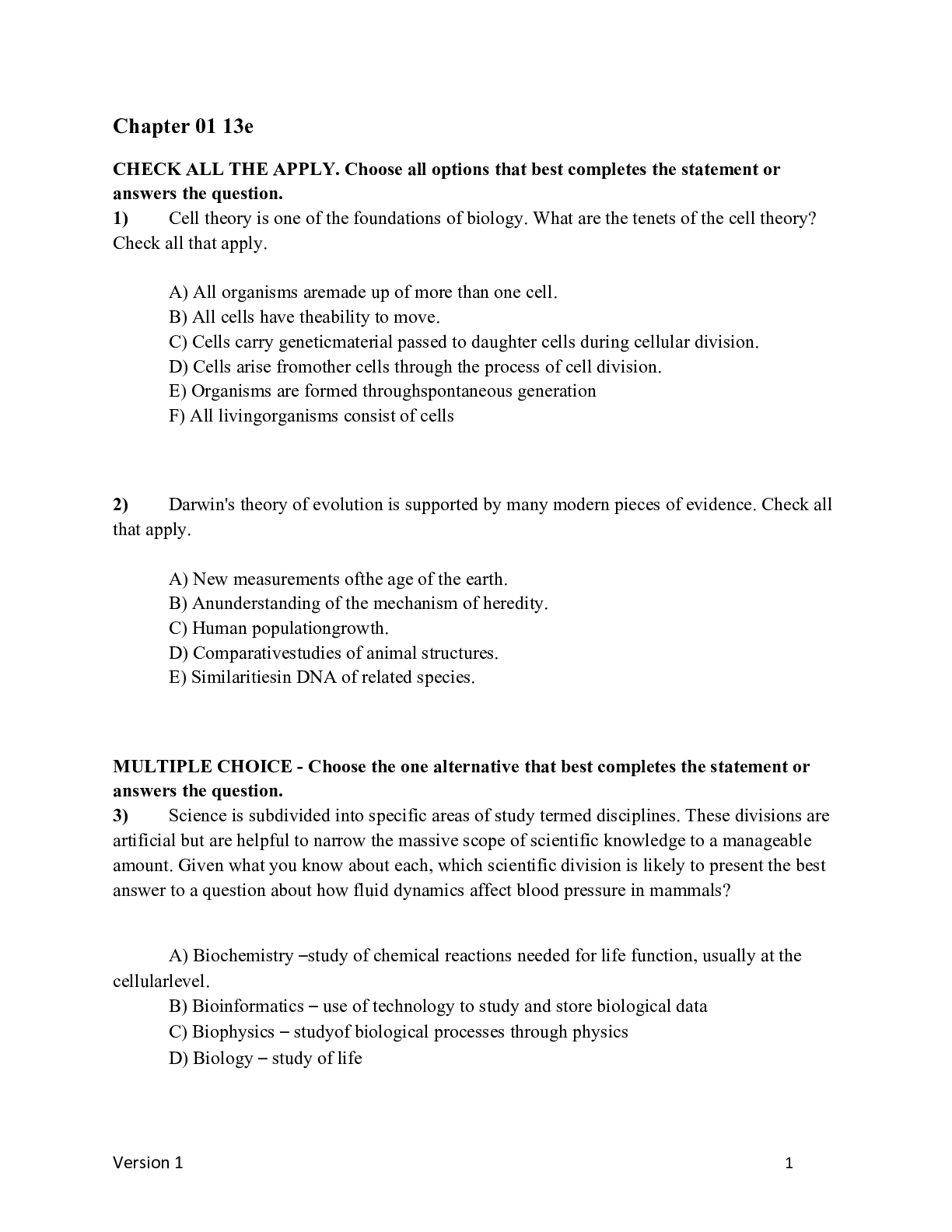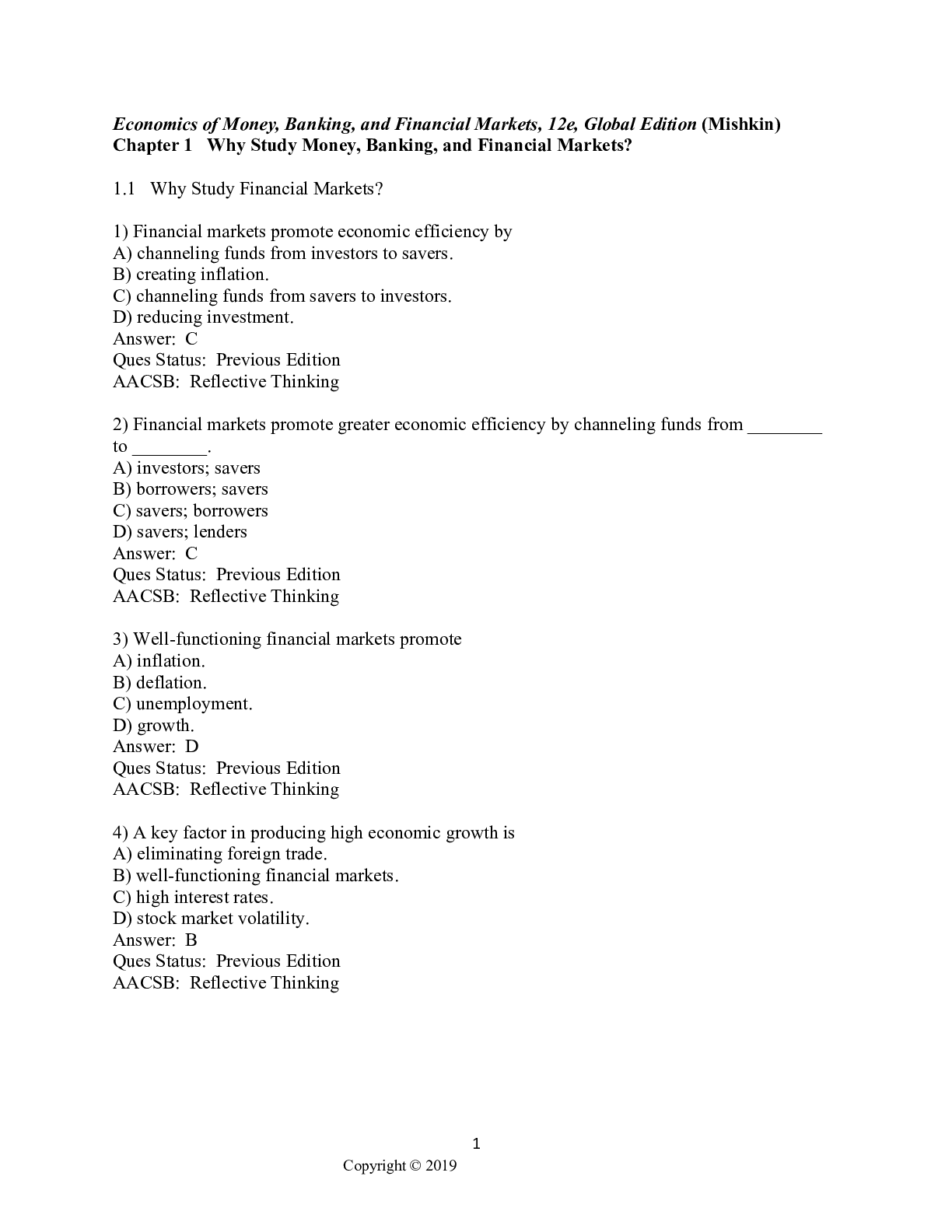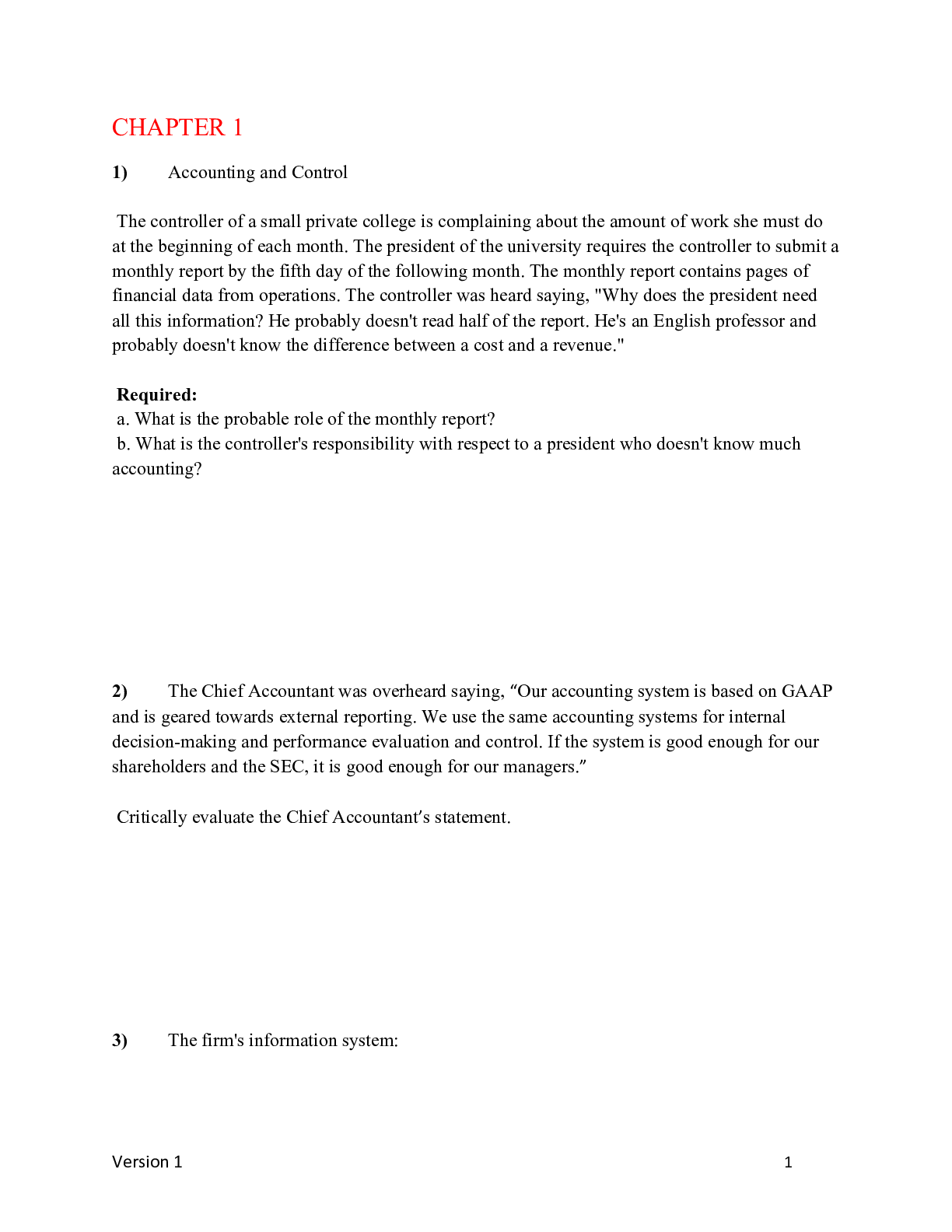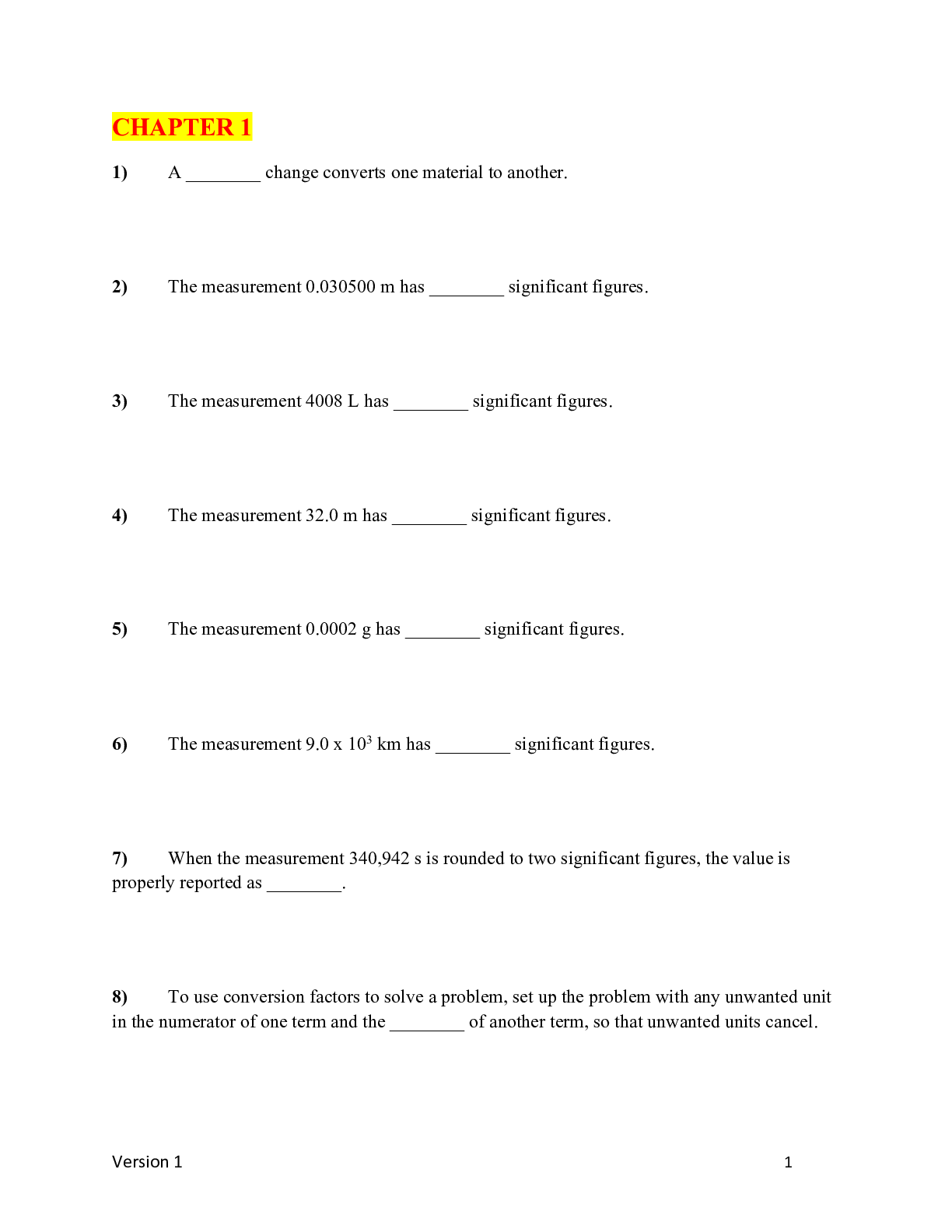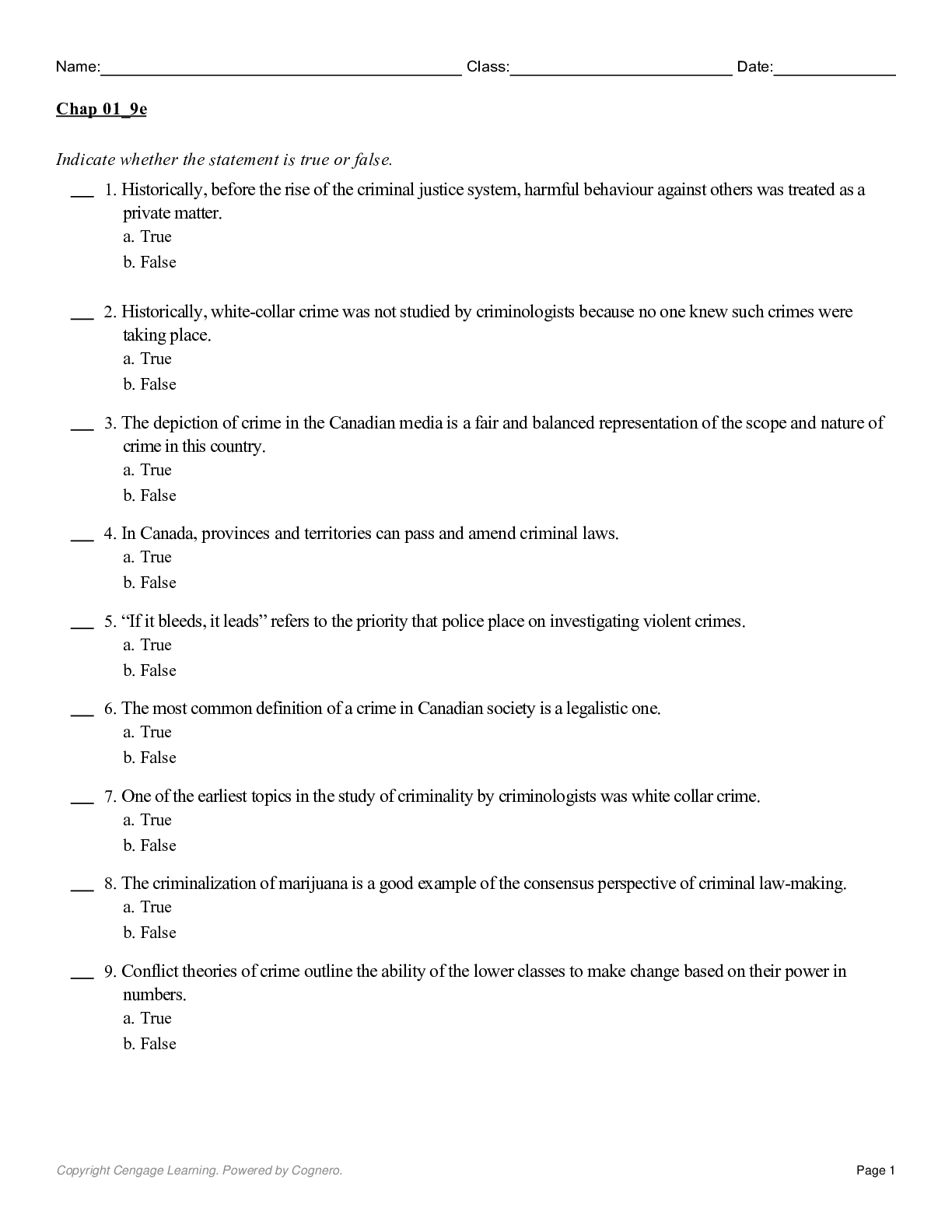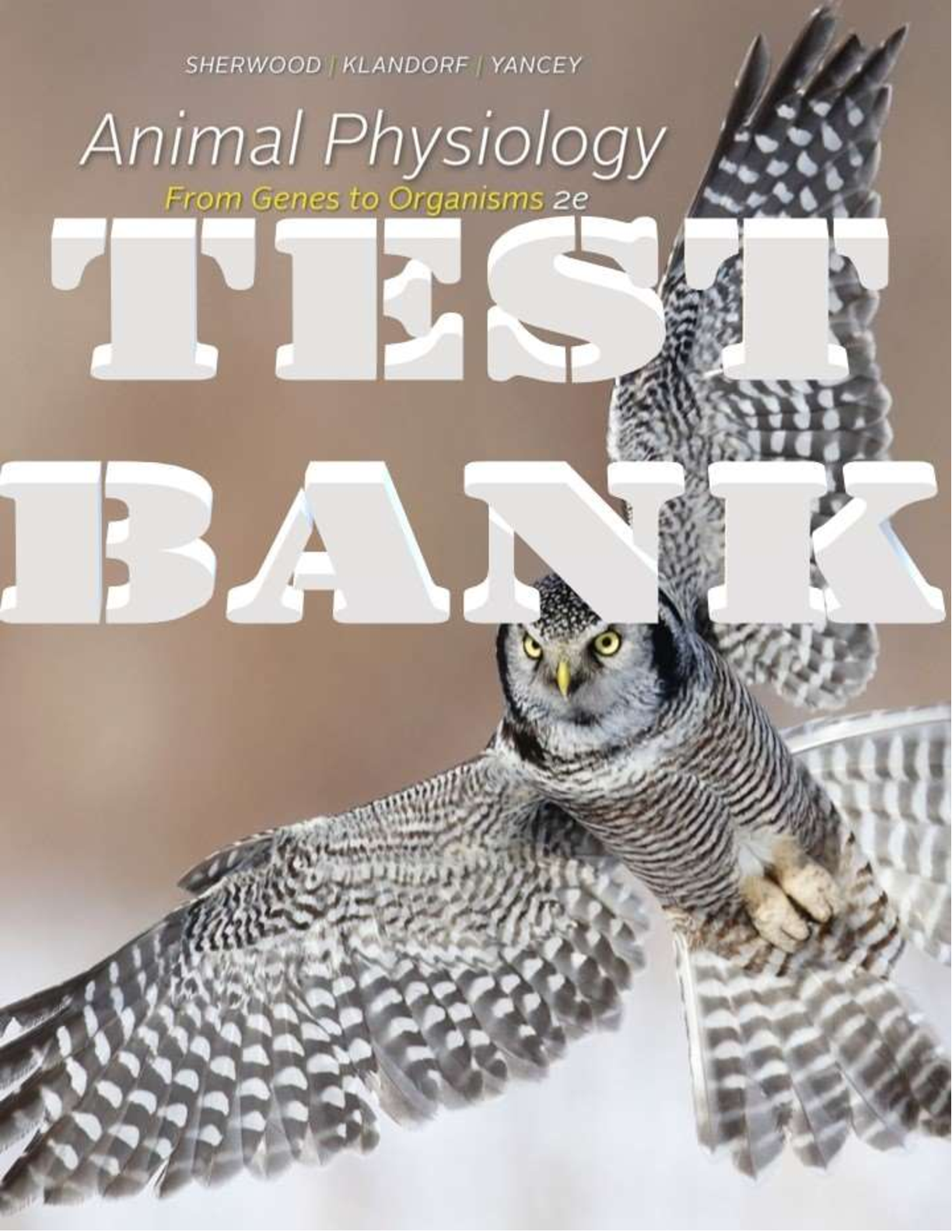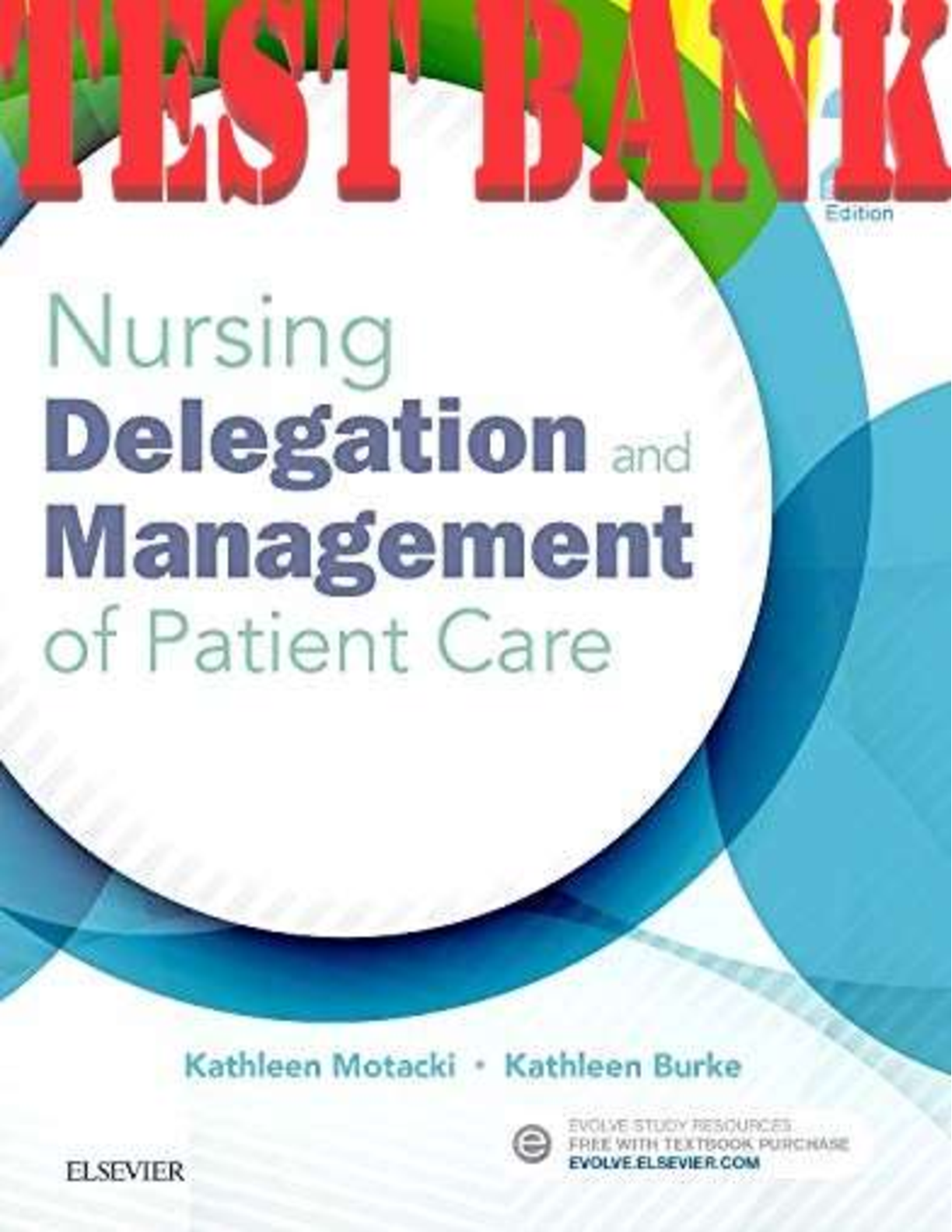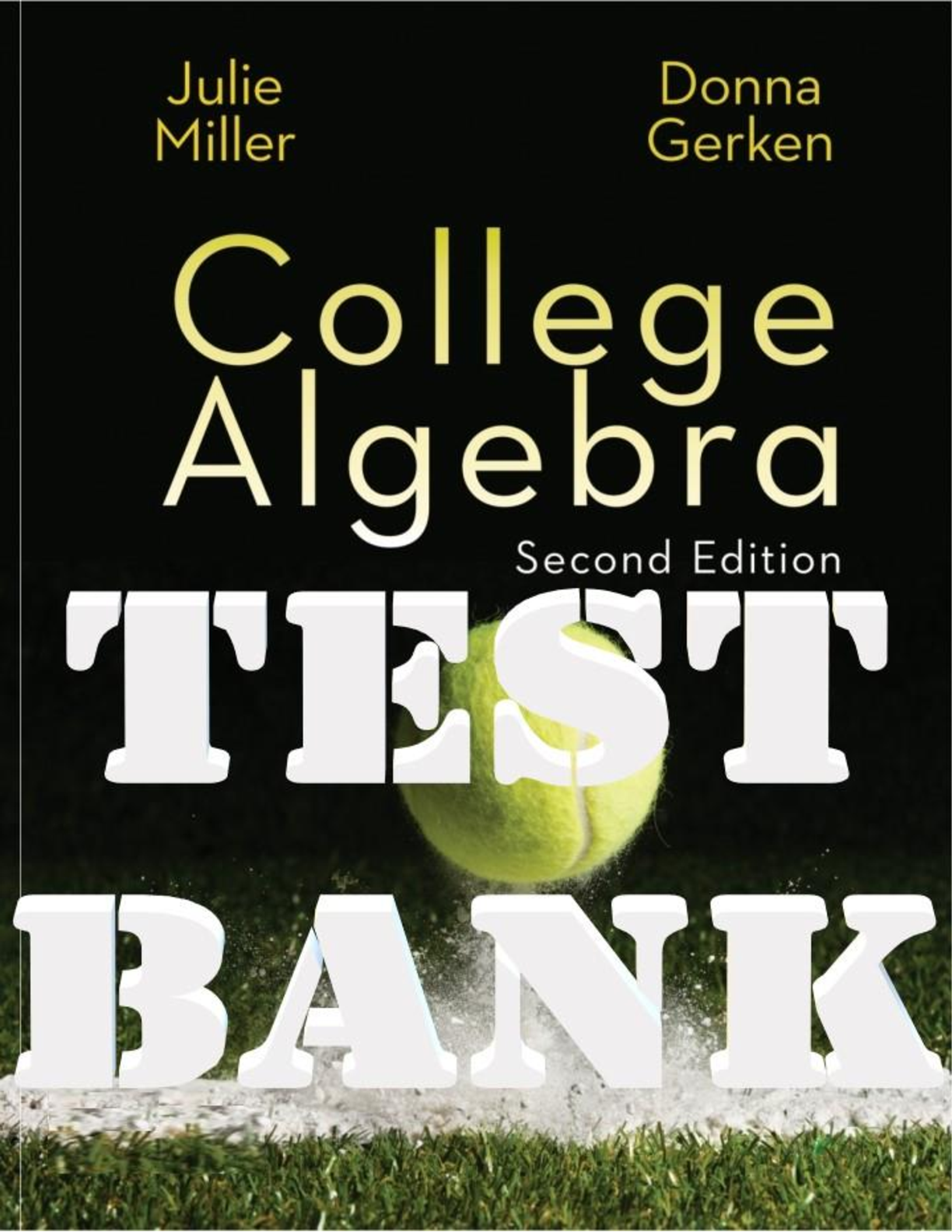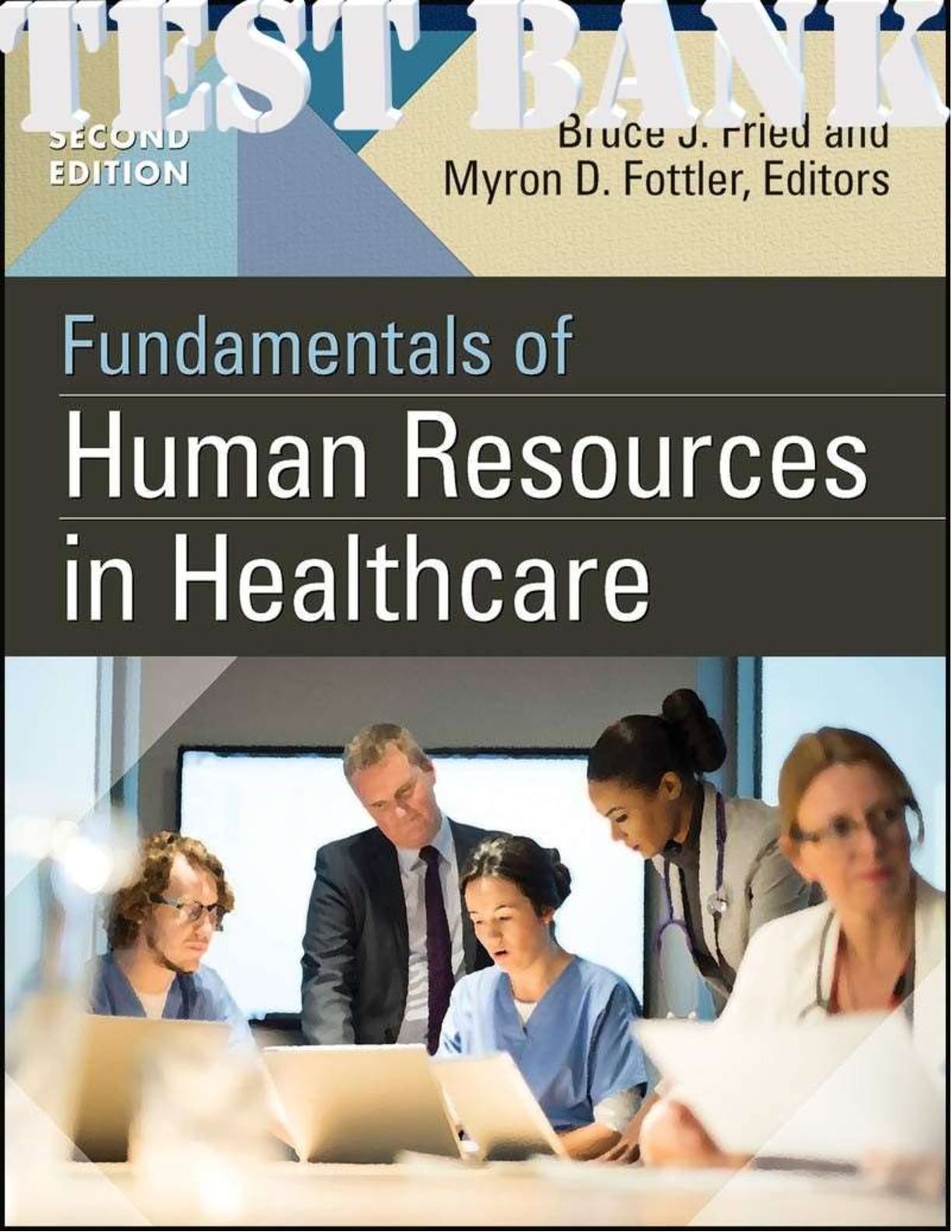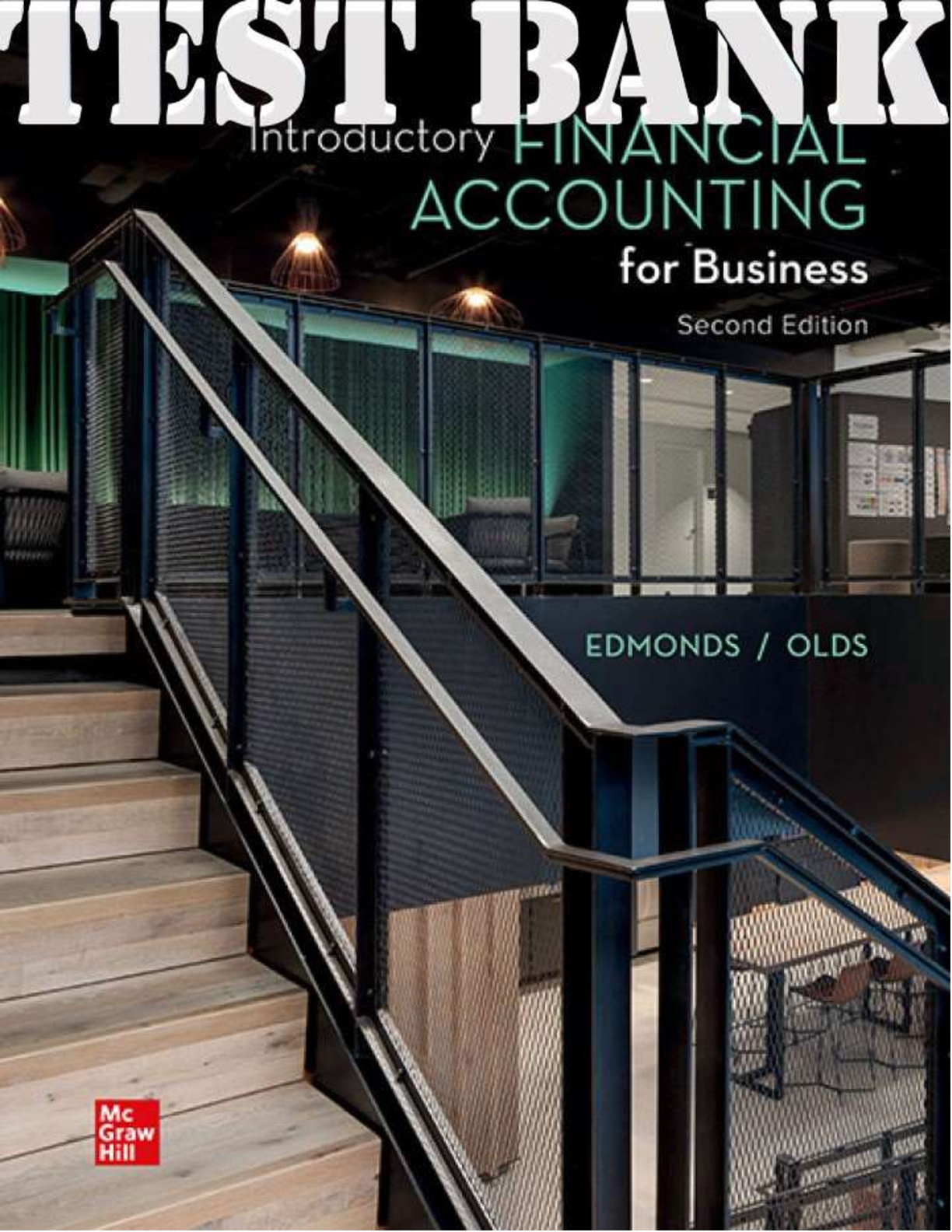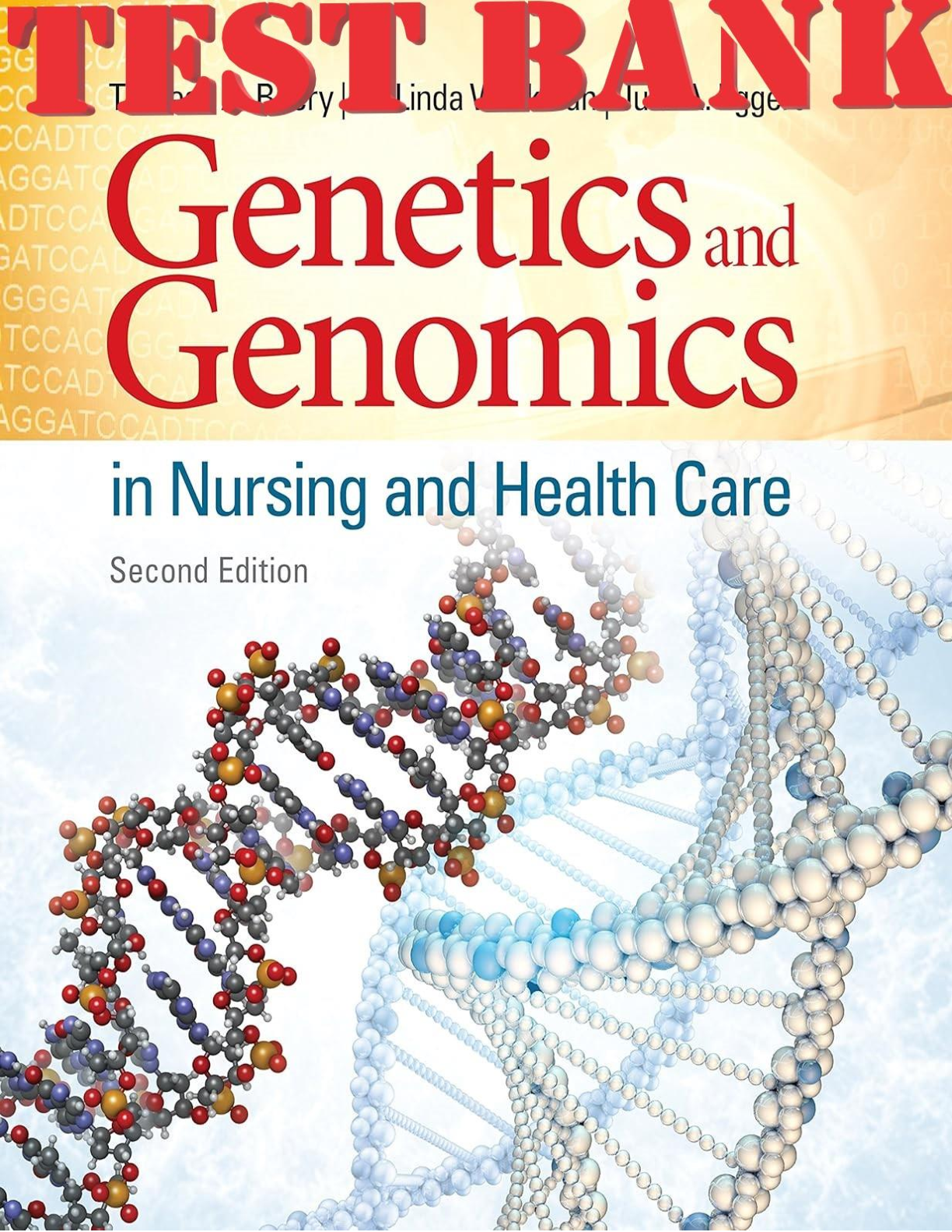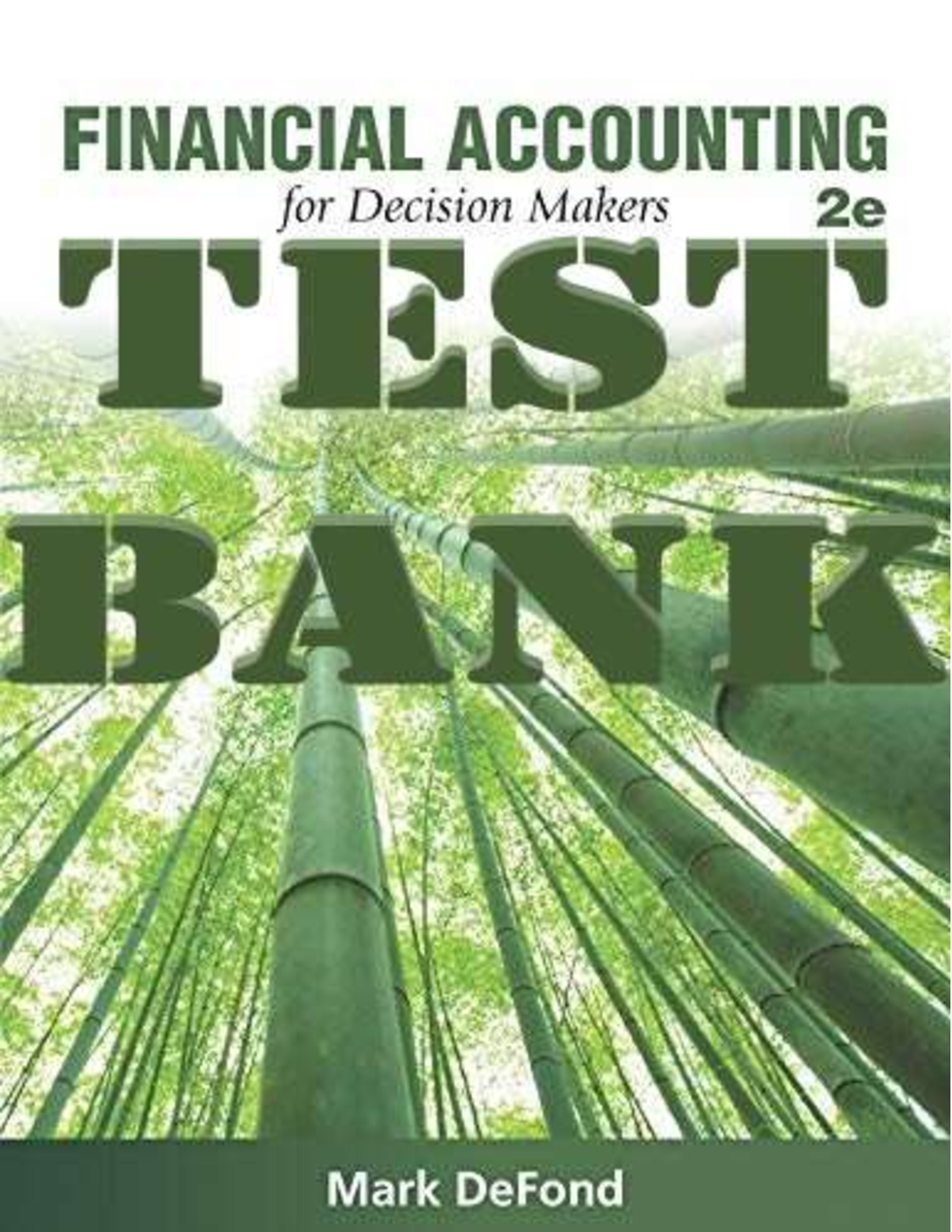Operations Management > TEST BANK > Test Bank Operations Management, Managing Global Supply Chains, 2nd Edition by Venkataraman (All)
Test Bank Operations Management, Managing Global Supply Chains, 2nd Edition by Venkataraman
Document Content and Description Below
Test Bank for Operations Management, Managing Global Supply Chains, 2nd Edition, 2e by Ray R. Venkataraman, Jeffrey K. Pinto TEST BANK ISBN-13: 9781544339399 FULL CHAPTERS INCLUDED PART I: INTR... ODUCTION Chapter 1: Introduction to Managing Global Operations and Supply Chains, Operations Profile: Intel Uses Quality Control to Achieve World Domination, 1.1 Supply Chains and Operations Management in the Global Economy, Offshoring and Outsourcing, Globalization, Supply Chains, and Operations Management, Consider This 1.1: Is American Manufacturing Dead?, 1.2 What Does Operations Management Entail?, Consider This 1.2: Why You Should Consider a Career in Operations and Supply Chain Management, Consider This 1.3: Service Operations in India, 1.3 What Does Supply Chain Management Entail?, Supply Chain Structures and Partners, Operations Profile: Zara: Bringing Speed to Fashion Through Supply Chain Management, First-Tier Suppliers, Second-Tier Suppliers, Inbound and Outbound Storage, Wholesalers and Retailers, Final Consumers, 1.4 An Integrated Perspective on Operations and Supply Chain Management, Decisions in Operations and Supply Chain Management, Operations Interfaces in a Product Supply Chain, Operations Profile: Lessons Learned: Apple Puts All Its Eggs in One (Very Expensive) Basket, Operations Interfaces in a Service Supply Chain, 1.5 The Evolution of Operations and Supply Chain Management, 1.6 Current and Emerging Issues in Operations and Supply Chain Management, The Continuous Optimization of Resources, Greater Supply Chain Risks and Supply Chain Restructuring, Role of Technology and Data Analytics, Sustainability, 1.7 Road Map: How This Text Is Organized, Chapter Summary, Key Terms, Discussion and Review Questions, Problems, Case Study 1.1 Multinational Companies and China: Investing for the Long Term, Case Study 1.2 Nintendo’s Wii and Wii U: Absence Makes the Heart Grow Fonder, Video Case, Critical Thinking Exercise, PART II: STRATEGIC DECISIONS Chapter 2: Operations and Supply Chain Strategies, Operations Profile: Chubbies’ Supply Chain Strategy Keeps the Fun in Short-Shorts, 2.1 Levels of Strategic Planning, Corporate Strategy, Business Unit Strategies, Functional Strategies, 2.2 Formulating and Evaluating Operations Strategies, Critical Elements of an Operations Strategy, Maintaining the Fit Among Critical Elements, Strategic Structural and Infrastructural Decisions, Evaluating the Performance of an Operations Strategy, 2.3 Formulating and Evaluating Strategies for Service Organizations, Strategic Positioning, Formulating the Service Operations Strategy, Tactical Execution, Continuous Service Improvement, 2.4 Measuring Productivity as Part of Strategic Planning, Types of Productivity Measures and Their Uses, Factors Affecting Productivity, Steps to Improving Productivity, Measuring Productivity in the Service Sector, Operations Profile: Lessons Learned: Bigger Ships, More Cargo, Bigger Headaches!, 2.5 Strategies for Supply Chains, Formulating Supply Chain Strategies, Evaluating the Performance of a Supply Chain Strategy, 2.6 Global Strategies, Integrating Operations and Supply Chain Strategies, Risk Management Strategies, 2.7 Sustainability Issues, Chapter Summary, Key Terms, Discussion and Review Questions, Solved Problems, Problems, Case Study 2.1 Supply Chain Strategies and Disaster Planning, Video Case, Critical Thinking Exercise, Chapter 3: Project Management, Operations Profile: Apple’s New Headquarters, 3.1 Projects, Project Teams, and Measuring Success, Project Teams, What Makes a Project Successful?, 3.2 Project Life Cycles, Operations Profile: The Expeditionary Fighting Vehicle, 3.3 Conceptualizing and Planning Projects, Conceptualization, Planning, Consider This 3.1: Statements of Work: Then-and-Now, Employing Risk Management Techniques, 3.4 Scheduling Projects, Estimating the Duration of a Project’s Activities, Creating Precedence Diagrams and Gantt Charts, Determining a Project’s Schedule: Creating Network Diagrams, Crashing the Project, 3.5 Supply Chains for Projects, Supply Chain Activities for Projects, Designing a Project’s Supply Chain, 3.6 Executing, Evaluating, and Terminating Projects, Evaluating a Project’s Status: S-Curves and Earned Value Management, Terminating the Project, 3.7 Sustainability Issues, 3.8 Global Projects, Operations Management: Lessons Learned: Unpopularity of Fossil Fuels Is Leading to Project Cancellations, Chapter Summary, Key Terms, Discussion and Review Questions, Solved Problems, Problems, Case Study 3.1 Project Management in the Movie Business, Video Case, Critical Thinking Exercise, Supplement for Chapter 3: Project Management, Operations Profile: Fast Tracking Manchester’s New Airport Development, 3S.1 Determining the Probability of a Project Being Completed on Time, 3S.2 Calculating the Time−Cost Trade-Offs of Crashing a Project, 3S.3 Calculating a Project’s Earned Value, Terminology for the EVM Method, Creating Project Baselines, Why Use Earned Value?, Steps in the Earned Value Management Method, Supplement Summary, Key Terms, Discussion and Review Questions, Solved Problems, Problems, Critical Thinking Exercise, Chapter 4: Product and Service Innovations, Operations Profile: Developing New Products and Services in the Pet Industry, 4.1 Why Companies Develop New Products and Services, Responding to Market Challenges With New Products and Services, Why Do New Products Fail?, Operations Management: Lessons Learned: Poor Product Launches—What’s in a Name?, Types of Innovation, 4.2 How New Products Are Developed, The Traditional Approach to New Product Development, The Stage-Gate® Approach to New Product Development, 4.3 New Product Development Concepts and Strategies, Operations Profile: New Product Development at Coca-Cola: Illy Issimo, Modular Design, Robust Product Design, Value Analysis and Value Engineering, Mass Customization, Design for Manufacturing and Assembly (DFMA), Design for Reliability (DFR), Design for Disposal, Remanufacturing, and Recycling (DFDRR), Designing Products for the Internet of Things (IoT), Quality Function Deployment (QFD), Concurrent Engineering, Time-Based Competition, 4.4 Using Technology to Develop New Products, Rapid Prototyping and Virtual Reality, Computer-Aided Design (CAD), 4.5 Global Product Development, The Evolution of Global Product Development, Challenges Related to Global Product Development, 4.6 New Product Development Issues for Supply Chains, Operations Management: Lessons Learned: The Impact of Supply Chain Delays, Collaboration Within Supply Chains, 4.7 How Services Are Designed, 4.8 Legal, Ethical, and Sustainability Issues, Legal and Ethical Issues, Sustainability Issues, Chapter Summary, Key Terms, Discussion and Review Questions, Problems, Case Study 4.1 Redesigning for Efficiency: The Chevrolet Malibu, Video Case, Critical Thinking Exercise, Supplement for Chapter 4: Reliability, Operations Profile: Computer Glitch Grounds United Airlines, 4S.1 Understanding Reliability, Estimating Reliability, 4S.2 Availability and Maintainability, Supplement Summary, Key Terms, Discussion and Review Questions, Solved Problems, Problems, Chapter 5: Managing for Quality, Operations Profile: Louis Vuitton Spares No Expense to Gain the Quality “Seal of Approval” for Its Watches, 5.1 Defining Quality, The Quality Dimensions of Products, The Quality Dimensions of Services, 5.2 The Benefits and Costs of Managing Quality, 5.3 The Evolution of Quality Management and Its Pioneers, Early Attempts at Quality Management, Consider This 5.1: Measuring Quality Costs, Operations Management: Lessons Learned: Yamada Electric and a Simple Solution to a Quality Problem, 5.4 Major Quality Management Initiatives, Total Quality Management (TQM), Customer Involvement, ISO Standards, Baldrige Standards, Operations Profile: TQM Improves Hospital Operations, Six Sigma, Consider This 5.2: Profile of a Malcolm Baldrige Award Winner: Memorial Hermann Sugar Land Hospital, 5.5 Quality Management Tools and Techniques, Service Quality Management Tools, Electronic Service Quality (e-SQ), 5.6 Managing Quality for Supply Chains, Consider This 5.3: Service Quality at Amazon.com, Procurement Quality, Design Quality, Production and Delivery, Operations Management: Lesson Learned: Sleek Audio Tests Overseas Manufacturing, 5.7 Global Quality Management, TQM and Global Quality, Consider This 5.4: Global Quality Management at Heinz, Information Systems and Global Quality, Technology Networks and Global Quality, Six Sigma and Global Quality, 5.8 Legal, Ethical, and Sustainability Issues, Sustainability, Corporate Social Responsibility, Chapter Summary, Key Terms, Discussion and Review Questions, Problems, Case Study 5.1 Pfizer Fixes Problems With Its Cleaning Processes, Case Study 5.2 Partnering to Improve Quality, Case Study 5.3 3M: Finding the Delicate Balance Between Six Sigma and Innovation, Case Study 5.4 Van Halen, Brown M&Ms, and Quality Control, Video Case, Critical Thinking Exercise, Chapter 6: Quality Improvement and Control Tools, Operations Profile: Automated Quality Control at Electronic Arts—Avoiding the Effects of “Crunch”, 6.1 Quality Control Versus Quality Assurance, 6.2 Quality Appraisal Tools, Check Sheets, Histograms, Pareto Charts, Scatter Diagrams, Cause-and-Effect Diagrams (Fishbone Diagrams), Process Flowcharts, 6.3 Quality Defect Prevention Tools, Statistical Process Control (SPC), Control Charts, Process Capability Analysis, Revisiting Six Sigma: Calculating Six Sigma Quality of a Process, 6.4 Quality Design Tools, The Taguchi Method (Robust Design), Chapter Summary, Key Terms, Discussion and Review Questions, Solved Problems, Problems, Case Study 6.1 J.D. Power Automobile Surveys: What Does “Quality” Mean, Anyway?, Video Case, Critical Thinking Exercises, Chapter 7: Capacity Planning, Operations Profile: For Its Capacity Planning, UPS Asks Retailers to Help Out, 7.1 Capacity Planning, The Strategic Importance of Capacity Decisions, Types of Capacity and Capacity Measurements, Strategies for Capacity Planning, The Capacity Planning Process, 7.2 Service Capacity Planning, Factors Influencing Service Capacity, Capacity Planning for Services, 7.3 Capacity Planning for Supply Chains, Demand Uncertainty, Technological Uncertainty, Operations Management: Lessons Learned: Pratt & Whitney Battles Capacity and Supply Chain Problems for a New Jet Engine, Supply Uncertainty, A Framework for Strategic Supply Chain Capacity Planning, 7.4 Ethical and Sustainability Issues, 7.5 Global Capacity Management, Consider This 7.1: Working to End Child Labor, Chapter Summary, Key Terms, Discussion and Review Questions, Solved Problems, Problems, Case Study 7.1 Kirwain’s Capacity Planning Challenge, Video Cases, Critical Thinking Exercises, Chapter 8: Supply Chain Design and Location Planning, Operations Profile: Mexico, the Next Great Automaker, 8.1 Supply Chain Design and Facility Location Decisions, Factors That Affect Supply Chain and Location Decisions, Competitive Strategies That Affect Supply Chain and Location Decisions, Why Supply Chain and Location Decisions Sometimes Backfire, 8.2 Phases in the Supply Chain Design and Location Decision-Making Process, Phase I: Design the Supply Chain, Phase II: Determine the Configuration of Regional Facilities, Phase III: Select Potential Sites for Locating Facilities, Phase IV: Choose Locations, 8.3 Analytical Methods for Evaluating Locations, The Factor Rating Method, Breakeven Analysis, The Center-of-Gravity Method, Consider This 8.1: GIS and Location Decisions, The GIS (Geographic Information System) Method, 8.4 Ethical and Sustainability Issues, 8.5 Global Location Planning, Chapter Summary, Key Terms, Discussion and Review Questions, Solved Problems, Problems, Case Study 8.1 Countering the Counterfeiters, Case Study 8.2 Alpharetta Tools, Video Case, Critical Thinking Exercise, Chapter 9: Process Design and Layout Planning, Operations Profile: Process Redesign at Mars: Moving Toward Sustainability and Social Responsibility, 9.1 Designing, Selecting, and Redesigning Manufacturing Processes, Basic Process Types, Mass Customization Processes, Process Selection Decisions, 9.2 Designing Service Processes, Classifying Processes Within the Service Process Design Matrix, Positioning and Repositioning Processes Within the Service Process Design Matrix, Using Technology to Improve Service Processes, 9.3 Designing Processes for Supply Chains, Classifying Manufacturing Processes by the Degree of Product Customization, Mapping Manufacturing Methods Across Supply Chains, 9.4 Global Process Design, 9.5 Layout Planning, The Strategic Nature of Layout Decisions, Basic Types of Layouts, Other Types of Layouts, Operations Management: Lessons Learned: Facing Declining Sales, Subway Redesigns Its Stores, 9.6 Legal, Ethical, and Sustainability Issues, Chapter Summary, Key Terms, Discussion and Review Questions, Problems, Case Study 9.1 Challenges of Redesigning a Plant Layout, Video Case, Critical Thinking Exercise, Supplement for Chapter 9: Tools for Analyzing, Designing, and Selecting Processes and Layouts, Operations Profile: Relieving Congestion at St. Francis Hospital, 9S.1 Process Selection, Design, and Analysis Tools, Tools for Process Selection, Tools for Process Analysis and Design, Tools for Analyzing Service Processes, 9S.2 Layout Analysis Tools and Techniques, Techniques for Designing Process Layouts, Technique for Designing Product Layouts: Line Balancing, Computer Software for Designing Process Layouts, Supplement Summary, Key Terms, Discussion and Review Questions, Solved Problems, Problems, Critical Thinking Exercises, PART III: INTEGRATIVE DECISIONS Chapter 10: Supplier Management, Operations Profile: Got Milk? A Lot More Than We Need!, 10.1 Supplier Management and Its Goals, Meeting Quality Standards, Making Deliveries on Time, Minimizing Costs, Operations Management: Lessons Learned: “Do You Want Fries With That?” Supplier Management Problems Lead to Horse Meat in Hamburgers, Developing Better Products and Processes, 10.2 The Supplier Management Process, Strategic Sourcing, Purchasing, Supplier Performance Management, Supplier Information Management, Supplier Risk Management, Operations Profile: Coca-Cola: Managing an Orange’s Journey to the Customer, Supplier Relationship Management (SRM), Supplier Phase-Out, 10.3 Managing Service Providers, Sourcing Service Providers, Service Provider Risk Management, Service Provider Performance and Relationship Management, 10.4 Global Supplier Management, Have a Backup Pool of Suppliers, Choose Suppliers From Countries That Have Better Laws and Regulations and Infrastructures, Establish Collaborative Relationships With Global Suppliers, Use Technology for Greater Supplier Visibility, Select Suppliers From a Country Whose Language and Culture You Can Understand, 10.5 Legal, Ethical, and Sustainability Issues, Chapter Summary, Key Terms, Discussion and Review Questions, Solved Problem, Problems, Case Study 10.1 The Boeing 787, Batteries, and Supplier Management, Video Cases, Critical Thinking Exercise, Chapter 11: Logistics Management, Operations Profile: Challenges With River Transportation—The Cost of Crumbling Infrastructure, 11.1 Integrated Logistics Management, 11.2 Order Fulfillment, 11.3 Transportation Management, Strategy and Transportation Performance Metrics, Transportation Modes: Basic and Intermodal, Transportation Network Design Options, 11.4 Packaging, Packaging Factors, Packaging Types, Package Labeling, 11.5 Materials Handling, 11.6 Warehousing Management, Warehouse Functions, Warehouse Types, 11.7 Inventory Management, 11.8 Facilities Network Design, 11.9 Global Logistics, Political Factors, Economic Factors, Cultural Factors, Distance, International Documentation, Security, Global Channel Intermediaries, International Transportation Modes, Other Features of Global Logistics, 11.10 Logistics Outsourcing, 11.11 Logistics in the Service Sector, 11.12 Ethical and Sustainability Issues, Packaging, Consolidating Facilities, Operations Management: Lessons Learned: Making Trucking More Cost Effective and Sustainable Through Collaboration, Using a Mixture of Transportation Modes and Optimizing Transportation Routes, Managing Capacity, Chapter Summary, Key Terms, Discussion and Review Questions, Problems, Case Study 11.1 How Sustainable Logistics Solutions and Technologies Have Helped Walmart Become More Efficient, Case Study 11.2 Third-Party Logistics and the Mistreatment of Workers, Video Case, Critical Thinking Exercises, Chapter 12: Demand Management and Customer Service, Operations Profile: The Challenge of Demand Management for Popular Items—Fitness Trackers, 12.1 Demand Management, Factors That Affect Demand Management, Demand Planning, Consider This 12.1: Hurricane Harvey Leads to Surge in Demand for Automobiles, Demand Forecasting, Proactively Managing Demand, 12.2 Global Demand Management, 12.3 Services Demand Management, 12.4 Customer Service and Demand Management, The Role of Customer Service in Supply Chains, Consider This 12.2: Transforming Customer Service Management, Customer Service Management, Operations Management: Lessons Learned: Trapped on an Airplane, 12.5 Ethical and Sustainability Issues, Chapter Summary, Key Terms, Discussion and Review Questions, Problems, Case Study 12.1 McDonald’s Reinvents Itself, Again, Case Study 12.2 Predicting the Future Demand for Rural Health Care, Video Cases, Critical Thinking Exercises, Chapter 13: Demand Forecasting Methods, Operations Profile: Challenges in Forecasting Demand for L.L. Bean’s Famous “Duck Boots”, 13.1 Introduction to Forecasting and Its Applications, 13.2 The Characteristics of Good Forecasts, 13.3 Qualitative Versus Quantitative Forecasting Methods, Qualitative Methods, Quantitative Methods, Types of Quantitative Methods: Time Series Forecasting, Short-Term Time Series Forecasting Methods, Operations Profile: Using Forecasting to Solve Hospital Staffing Challenges, Medium- to Long-Term Time Series Forecasting Methods, Techniques for Evaluating Cyclical Variations, Types of Quantitative Methods: Causal or Associative Methods, 13.4 Measuring and Monitoring the Accuracy of Forecasting Methods, Mean Absolute Deviation (MAD), Cumulative Sum Error (CSE) and Bias, Mean Squared Error (MSE), Mean Absolute Percentage Error (MAPE), 13.5 Monitoring and Controlling Forecasts, 13.6 Forecasting for Supply Chains, Consider This 13.1: Forecasting Using Excel, 13.7 Ethical Issues, Chapter Summary, Key Terms, Discussion and Review Questions, Solved Problems, Problems, Case Study 13.1 Forecasting Ticket Demand for the Super Bowl, Case Study 13.2 Ethical Forecasting: If You Torture the Numbers Long Enough, They Can Tell You Anything!, Video Cases, Critical Thinking Exercises, PART IV: TACTICAL DECISIONS Chapter 14: Lean Operations and Supply Chains, Operations Profile: Lean Operations at Rolls-Royce Indianapolis, 14.1 Introduction to Lean Operations, 14.2 The Philosophy of Lean Systems, 14.3 Elements of Lean Systems, Workflow and Throughput, Pull Systems Versus Push Systems, Focused Factories, Value Stream Mapping (VSM), Quality and Lean Systems, Lean Six Sigma, Quality at the Source, Plant Layouts That Balance Workflow, Stable Schedules, Faster Setup Times, Consider This 14.1: Calculating Takt Time, Group Technology, Kanban Systems, Operations Profile: Kanban Systems at Dell, Reduced Inventory, Improved Product Designs, 14.4 Lean Services, Operations Profile: WIPRO Limited and Lean Software Development, 14.5 Lean Supply Chains, Characteristics of a Lean Supply Chain, Full Collaboration Among the Supply Chain’s Partners, Operations Profile: Lean Operations at Exempla Lutheran Medical Center, Transparent Information, Operations Profile: Walmart’s Lean Supply Chain Operations, Lean Logistics, Performance Measurement and Continuous Improvement, 14.6 Lean Global Supply Chains, 14.7 Sustainability Issues, Operations Profile: Lessons Learned: Learning to be Lean at Amazon, Chapter Summary, Key Terms, Discussion and Review Questions, Solved Problem, Problems, Case Study 14.1 Lean Sustainable Supply Chains at Unilever, Case Study 14.2 TAL Apparel and JCPenney, Video Case, Critical Thinking Exercise, Appendix 14.1: Value Stream Mapping Symbols, Appendix 14.2: Steps for Developing a Value Stream Map, Chapter 15: Inventory Management, Operations Profile: Best Buy Moves Inventory Control to Its 1,000 Warehouses, 15.1 Types of Inventory, 15.2 Inventory Costs, Purchase Costs and Ordering Costs, Setup Costs, Holding or Carrying Costs, Stock-Out Costs, 15.3 Inventory Considerations for Supply Chains, Meeting Expected Normal Demand, Operations Management: Lessons Learned: Toyota—Why Inventory Matters and the Challenge of Just-In-Time, Protecting Against Shortages, Receiving Quantity Discounts, Guarding Against Future Price Increases, Meeting Sales Increases Caused by Seasonal Demand and Sales Promotions, Reducing Transportation Costs and Transit Times, Smoothing Out Production Fluctuations, Facilitating Decoupling of Processes, 15.4 Inventory Management Measures, Backorders and Lost Sales, Inventory Turnover, Days of Inventory in Stock, Order Fulfillment Lead Time, Fill Rate, Inventory Accuracy Rate, 15.5 Key Features of Effective Inventory Management Systems, Operations Management: Lessons Learned: How Pennsylvania’s State Liquor Store System Continues to Mismanage Inventory, Demand Forecasts, Lead Times, and Inventory-Related Cost Information, Inventory Classification: The ABC Method, Inventory Control Systems, Consider This 15.1: IKEA’s Successful Inventory Management Techniques, 15.6 Uncertainty in Supply Chain Inventories: The Bullwhip Effect, Causes of the Bullwhip Effect, Strategies for Mitigating the Bullwhip Effect, 15.7 Ethical and Sustainability Issues, 15.8 Global Inventory Management, 15.9 Service Sector Inventory Management, Chapter Summary, Key Terms, Discussion and Review Questions, Solved Problem, Problems, Case Study 15.1 Inventory Pressures Cause Tuesday Morning to Abandon e-Commerce, Case Study 15.2 Inventory Management in the Age of the Online Shopper, Video Case, Critical Thinking Exercises, Chapter 16: Inventory Control Models, Operations Profile: Walgreens Fights to Stay Profitable Through Inventory Management, Introduction, 16.1 How Much to Order: Continuous Review Systems, Basic Economic Order Quantity (EOQ) Model, 16.2 Economic Production Quantity (EPQ) Model, 16.3 EOQ Model with Quantity Discounts, 16.4 When to Order: Reorder Point for Continuous Review Systems (EOQ Model), Reorder Point Model for Constant Demand and Constant Lead Time, Operations Management: Lessons Learned: Inventory Mismanagement Helps Sink Target Canada, Reorder Point Model for Variable Demand and Constant Lead Time, Reorder Point Model for Constant Demand and Variable Lead Time, Reorder Point Model for Variable Demand and Variable Lead Time, 16.5 How Much to Order: Periodic Review Systems, 16.6 How Much to Order: Single-Period Inventory Systems, Chapter Summary, Key Terms, Discussion and Review Questions, Solved Problems, Problems, Case Study 16.1 When Your Customers Steer You Wrong: Walmart’s Project Impact Disaster, Video Case, Critical Thinking Exercise, Chapter 17: Sales and Operations Planning, Operations Profile: Black Friday Shopping in the United States—The Experience Is Quickly Changing, 17.1 The Basics of Sales and Operations Planning, 17.2 Benefits of Sales and Operations Planning, Sales and Operations Plan: Inputs and Outputs, 17.3 Framework of the Sales and Operations Planning Process, Data Gathering, Demand Planning, Supply Planning, Operations Profile: Problems in Predicting and Planning for Demand: The Pharmaceutical Industry, Financial Planning, Pre-S&OP Meeting, Executive S&OP Meeting, Top-Down Versus Bottom-Up: How Should S&OP Development Proceed?, 17.4 Options for Influencing Demand and Supply in Sales and Operations Planning, Options to Influence Demand, Options to Influence Supply, 17.5 Sales and Operations Planning Strategies, Level Strategy, Chase Strategy, Mixed Strategy, Choosing a Strategy, 17.6 Methods for Sales and Operations Planning, Developing a Sales and Operations Plan: Trial-and-Error Method, 17.7 Sales and Operations Planning for Supply Chains, Global Sales and Operations Planning, Consider This 17.1: Global Sales and Operations Planning: The World Has Changed, Benefits of Global S&OP, 17.8 Sales and Operations Planning in Service Industries, 17.9 Sustainable S&OP: Sales Carbon Operations Planning (SCOP), Additional Features and Functions of SCOP, Benefits of SCOP, 17.10 Ethical Issues, Operations Profile: Sustainable S&OP: Matching up Industries to Save Energy, Chapter Summary, Key Terms, Discussion and Review Questions, Solved Problem, Problems, Case Study 17.1: Coordinating Sales and Operations Planning for the Next Big Thing: The Case of the Sony PS4 Launch, Video Case, Critical Thinking Exercise, PART V: OPERATIONAL DECISIONS Chapter 18: Master Scheduling and Material Requirements Planning, Operations Profile: Managing Materials and Production at Rolls-Royce, 18.1 Master Scheduling, Master Scheduling Inputs, Processing, and Outputs, Functions of the Master Schedule, Master Schedule Planning Horizon and Replanning, Achieving Master Schedule Stability, Relationship Between the Master Schedule and the Production Environment, 18.2 Material Requirements Planning, MRP Terminology, MRP Inputs, Process, and Outputs, Other Considerations in MRP, Potential Benefits and Drawbacks of MRP, Integrating MRP and JIT Systems, MRP in the Service Sector, 18.3 Ethical and Sustainability Issues, Chapter Summary, Key Terms, Discussion and Review Questions, Solved Problems, Problems, Case study 18.1 Bringing Order to a Chaotic Restaurant, Video Case, Critical Thinking Exercise, Supplement for Chapter 18: Capacity Requirements Planning, MRP II, ERP, and DRP, Operations Profile: Callaway Golf Uses ERP to Keep Swinging, 18S.1 Capacity Requirements Planning (CRP), 18S.2 Manufacturing Resource Planning (MRP II)—An Extension of MRP, 18S.3 Enterprise Resource Planning (ERP), Benefits and Limitations of ERP, ERP for Service Industries, Consider This 18S.1: Electronic Medical Records Bring Together Patients and Their Health Care Providers, 18S.4 Impact of MRP, MRP II, and ERP on Supply Chains, Operations Management: Lessons Learned: Surviving an ERP System Disaster, 18S.5 Distribution Requirements Planning (DRP), 18S.6 Sustainability Issues, Supplement Summary, Key Terms, Discussion and Review Questions, Solved Problem, Problems, Case Study 18S.1 Thinking Outside the Box: Enterprise Training at General Mills, Critical Thinking Exercise, Chapter 19: Detailed Scheduling, Operations Profile: Scheduling at Walt Disney World: FastPass and Waiting for Rides, 19.1 What Detailed Scheduling Is, 19.2 Types of Scheduling for Manufacturers, Line Process Scheduling, Intermittent Process Scheduling, Sequencing N Jobs Through Two Machines: Johnson’s Rule, 19.3 Why Scheduling Is Complex, Theory of Constraints, Operations Management: Lessons Learned: Fixing Manufacturing Processes at Hitachi Tools, 19.4 Scheduling in the Service Sector, Appointment Systems, Reservation Systems, Workforce Scheduling, Decision Rules for Workforce Scheduling With Two Consecutive Days Off, 19.5 Scheduling for Supply Chains, 19.6 Ethical and Sustainability Issues, Chapter Summary, [Show More]
Last updated: 1 year ago
Preview 1 out of 876 pages
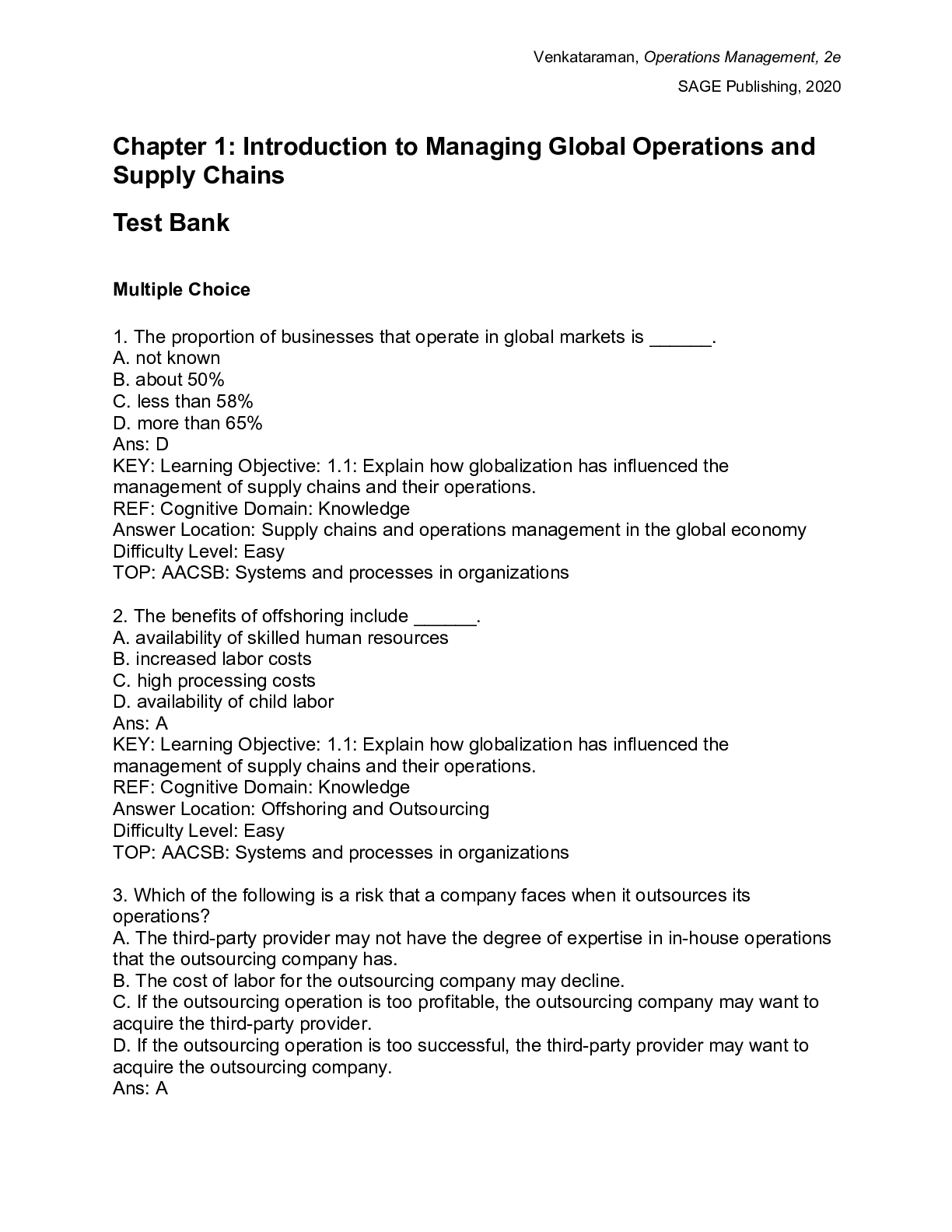
Buy this document to get the full access instantly
Instant Download Access after purchase
Add to cartInstant download
We Accept:

Reviews( 0 )
$35.00
Document information
Connected school, study & course
About the document
Uploaded On
Dec 12, 2022
Number of pages
876
Written in
Additional information
This document has been written for:
Uploaded
Dec 12, 2022
Downloads
0
Views
73

